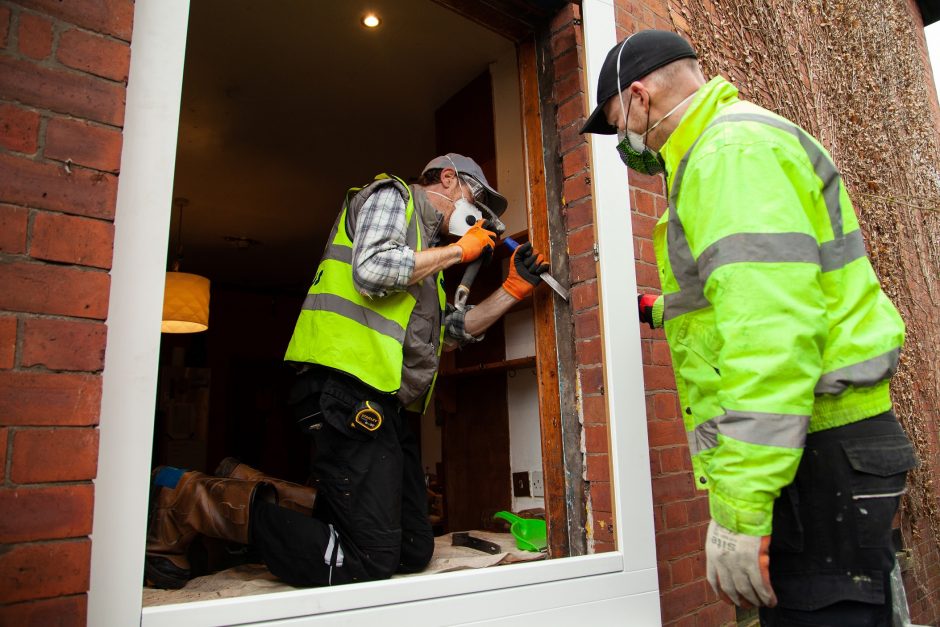The scrapping of feed-in tariff subsidies for community renewables in the UK has left the sector looking for sources of finance so it can help the country with its carbon transition.
With various green funds on offer, and scope to form partnerships with local authorities, transport operators and other anchor institutions, there are ways forward and sector body Community Energy England (CEE) held a day-long online conference last month to explore these further.
There is also the continued option of community share offers; Damian Tow, new project developer at Brighton Energy Co-op, said his organisation is now on its tenth offer. There are advantages, he added, to not being dependent on funding and grants – which can mean “you get a boss” and face regular audits by the funder, and run the risk of not developing a standalone business model.
But there are funds out there, such as the Green Heat Network Fund; John Taylor, from the Greater South East Energy Hub, said shared ground loops would be eligible for this if an organisation has 100 homes.
Community energy businesses can also offer heat as a service, he added, working with public buildings such as community centres and sports facilities to install heat pumps and other tech.

And there is funding which can support some housing retrofits and other green energy projects, such as the Clean Heat Grant and the Rural Community Energy Fund.
Peter Capener, MD at Bath & West Community Energy, talked about partnerships with local authorities, advising community energy businesses to cultivate support from, politicians, council officers, school leaders and planners.
With local authorities often changing administration, he recommends “a non party political approach”.
“We have to be careful with language,” he said, suggesting the sector use terms like “community enterprise” rather than the more politically loaded “social enterprise”. They should also avoid their projects being captured by specific politicians because “politicians come and go – you don’t want to be seen as part of a previous administration’s policy”.
His organisation has installed good deal of solar and ground loops, building a strong foundation for its business, and is now looking to negotiate long-term power purchase agreements with local authorities. “There is quite a move within local authorise to move towards a local approach … and take us out of this crazy wholesale market”. The funding mechanism here is the Contract for Difference (CfD) – a long-term contract between a generator and Low Carbon Contracts Company (LCCC). The contract enables the generator to stabilise its revenues at a pre-agreed level for the duration of the contract.
Related: Government net zero strategy ‘needs more support for co-ops and community energy’
It’s a long-term process, said Mr Capener. “It’s vitally important to raise the risks and benefits from local authority’s point of view, to make sure expectations are right from the start so they don’t pull out six months down the line.”
He added: “Local authorities looking to set up energy company would do better to do it in partnership with the community. It’s a challenge, culturally, to look at it as a joint venture but it would work better.“
Alastair Mumford, corporate energy manager at Devon County Council, said the council bought its energy relatively cheaply from Npower but was looking to develop synthetic power purchase agreements to run alongside this. This PPA would see the council offset its emissions by buying carbon credits from a community energy developer, which would itself have a contractual arrangement with wholesale market. The arrangement “would probably be cost neutral” for the council and would help the developer weather a volatile market.
Alistair Macpherson, from Plymouth Energy Community, gave advice on how to approach a local government – a sector he worked in before moving to community energy.
“Have sympathy for the person you’re approaching,” he said. “They are not easy places to work, there is huge pressures from austerity and cuts, and energy is low priority for them.”
He agreed with Mr Capener that this process should be apolitical and long-term. “Stop talking about the council as ‘the council’”, he added, “when you’re actually talking about a complex network, with a lot of stakeholders, and get smart to it. Often these stakeholders are split into different silos when they should be talking to each other.”
Look for allies, he added, and put forward a fully developed, credible idea that is ready to go. “Councils should be social activators but in reality they don’t have the capacity to do that.”
Jodie Giles, who leads Regen‘s community energy support programme, said community energy is now “business as usual” with energy organisations actively seeking out the sector’s involvement. But she warned against the risk we overstretch, adding: “We need to be focused on the specific value that we bring.”
With new smart tech and flexible systems coming, it is important to make sure everyone benefits. “We provide the social conscience for the energy system as a whole – how does it impact on people?”
Sally Murrell-Smith from TRESOC – Totnes Community Energy Society – said plans for eco-transition homes in the town were coming in over budget; this was tackled by looking the energy system, which cut costs and brought in new local community energy investors, alongside a £30,000 feasibility grant from the Rural Community Energy Fund.
“It’s a multi-system approach,” she said. “The feasibility study pointed to a micro grid as the most effective solution, with electrical vehicles, thermal stores, solar pV and insulation.”
Multi-stakeholder, multi-system approaches have a complexity which means high development costs, but do create “high knowledge capital,” added Ms Murrell-Smith; and knowledge sharing is a condition of the grant.
Duncan Law, policy and advocacy manager at CEE, said decarbonising heat is a huge challenge which means moving the UK from a centralised to a district system, and there is a need to break down current silos – generation, transmission and distribution – to create a whole system. Flexibility will be needed to avoid problems – such as an overloaded system when people arriving home from work all decide to charge their electric vehicles at once.
“Cost effective solutions will be dependent on place,” he said – looking at local “needs, constraints, assets, buildings, partnerships, retrofits, demand side management, community involvement .. and transport.”
There are three pilot projects on local area planning – Bridgend, Newcastle, and Greater Manchester, with a distributed heat programme being funding by BEIS to develop a project that adds up to net zero, right down to street level.

There is a scope for the sector to be involved in this planning; for instance, Manchester’s Carbon Co-op has been involved in local area energy planning (LAEP) and the energy network for the 2030s is designed.
Jonathan Atkinson from Carbon Co-op said: “Community energy brings legitimacy to a sector in transition. You get pushback when transforming a system without involving people, especially a centralised one in private hands. Community energy also has a competitive advantage in trust.”
This makes the sector an attractive partner to local authorities and other planners, he said.
Related: Co-ops launch community share offer to give homes low-carbon retrofits
Other ideas include local electric vehicle clubs for remote areas which do not have good transport options. Ben Dodd, of Green Fox Community Energy Co-operative, said it would be useful for such ventures to form a network and to work with the community energy sector to generate a robust business model.
Graham Booth, of Chester Community Energy, discussed ways of financing energy saving schemes through LED lighting retrofits. His co-op devised a “pay as you save scheme”, with retrofitted organisations paying for the installation out of money saved on its electricity bill. Because this involves credit, it is FCA regulated, which is a slow and difficult process, he warned.
Adrian Powell discussed his work at Charge My Street, which installs and operated community EV charge points. It his accessed funding from government agency Innovate UK and is working with the likes of Carlisle City Council, Lancaster City Council, Langdale Estate and Eden Housing Association to develop joint schemes. These can be complicated and ambitious; Change My Street is currently working with Bridge Hotel in Buttermere, Cumbria, on a joint scheme which would help a local energy group develop a hydro sceme in the are. The hydro would supply energy to the hotel, which would in turn sell power on to the EV charge scheme.
Ollie Prendered, CEO at Community Energy South, said his organisation is working with Essex County Council on its clean energy transition – mapping and engaging communities, developing a bespoke regional toolkit, establishing an engaged network and delivering business plans. Eight groups, including EV clubs, are now up and running in Essex, he said, and are ready to engage with other initiatives in England.
Community Energy South is also working on Riding Sunbeams, a “slow burner” joint project with Network Rail and a community energy group to use a solar farms to power rail.
“County councils are stakeholders in regional energy hubs,” he added. “It’s a good place to go for support. You need to look at who is responsible for climate change in the county council, the lead officer and the councillors with that portfolio.”